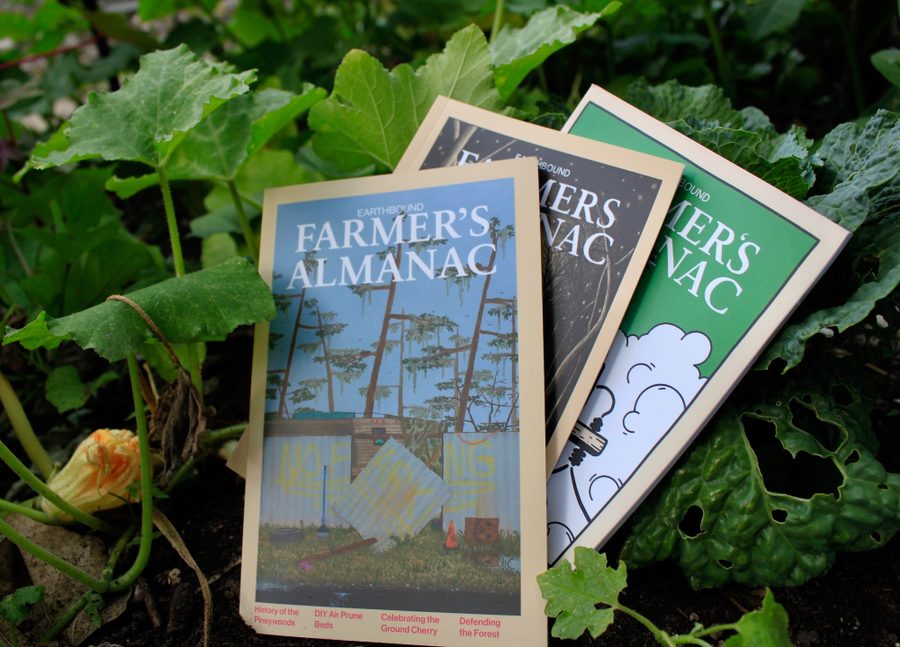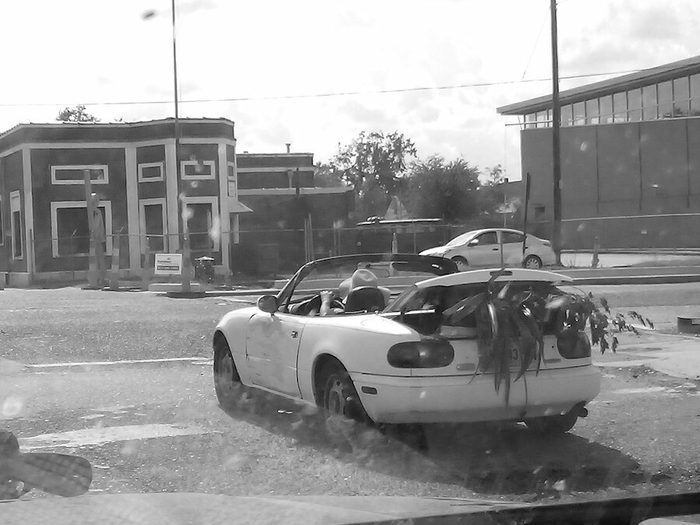A Farmer’s Almanac for the End of This World
The Earthbound Farmer’s Almanac offers a place for sharing stories, experiments and strategies for food autonomy in our age of ecological devastation.
Joseph Bullington

Editor’s Note: This essay first appeared in the 2023 Earthbound Farmer’s Almanac. In it’s third year of publication, the Almanac is put out by Lobelia Commons, a decentralized network for food autonomy and neighborhood survival in New Orleans, Louisiana. In its pages you’ll find an anti-colonial history of Pineywoods cattle in the Southeastern United States, accounts of “climate weirding” from across the continent, an illustrated guide for building your own fruit and nut tree nursery, a recipe for fig jam, comics, soil-type charts and much more. “This is a farmer’s almanac for the end of a world and the beginning of many others,” explains the Almanac’s back cover. “It’s a place for experimentation, for finding new forms and retrofitting old ones, for sharing stories of lived efforts toward a collective exit from this colonial nightmare, this separateness from the Earth.” You can read and buy the Almanac here.
How, and Why, to Keep an Almanac of Your Own
Not long after I moved to the neighborhood where I stay in New Orleans, I went to a nearby Italian grocery store to buy bay leaves. When I put the bag on the checkout counter, the old woman at the register glanced at it and began to hector me: “You’ve got to start paying attention!”

She was right. If I was paying attention, I’d know a half dozen bay trees grow along the nearby streets or offer their handfuls of dark leaves through the bars of mansion fences. If I was paying attention, I wouldn’t pay $3 for this plastic package of pale leaf scrap. She gave me directions and sent me on my way.
Being something of a rootless oaf, this experience was familiar. I often wander from place to place — and find I have no idea where I am and suffer the resulting bouts of dislocation.
It’s not all my fault. Like most of us, I don’t own land and drift about on the rental market and the landlord’s whims like a jellyfish on the tide. Like most of us, the dictatorship of property has deprived me of a living outside the money economy, robbed me of the complimentary skills and knowledge, severed me from what we now call nature.
Our times of climate change and ecological collapse demand that we fight our way back through this wall of disconnection. Become “earthbound!” this publication entreats. Come “down to Earth!” pleads the French thinker Bruno Latour. “Inhabit territories!” urges a popular pamphlet. Establish “re-attachments!” exhorts another. Our survival depends on it.
But how?!
We tend to lionize the small-time farmer who spends years or a lifetime
learning a piece of land, watching its cycles, changing and being changed by
it. But becoming earthbound need not wait — not for the day we scrape together
enough for a down payment, not for industrial collapse, not for anything. We’re
surrounded by landless people who are attached to the earth, in big and small
ways. Some of them never left. Where I come from in rural Montana, you’ll meet
them heading off into the quasi-commons of the public lands in search of meat,
berries, mushrooms, firewood. In South Louisiana, you’ll find them at their
favorite fishing spots in the swamps and marshes, pulling in sac-au-lait,
catfish, redfish, crabs (or commiserating outside the corner store: “Went
fishing today. Didn’t catch shit.”)

We can find our way home to earth, but only through revolt against the dictum of modern, first-world environmentalism that says nature is for looking at. While its industries plundered the earth wholesale, modernism has tried to teach us that we should admire the natural world in an abstract, distant way. The sightseers and wildlife watchers at the overlook wrinkle their noses at those who come huffing up out of the canyon, hefting bloody haunches of meat or bags of mushrooms, their faces lit with barbaric glee. It is crude, we are taught, to take anything for ourselves.
Well, I say to hell with that! The world is for participating in! Whether we start in the metropolis or a wilderness area, all of us can practice moving through our territories with the aim of subsistence. This practice can be an earthbound alternative to the dérive: You might return home not only with new thoughts, new ways of understanding your territory and how things move through it, but with fish, figs, bay leaves! And it need not be passive. You might notice a marginal scrap of land ignored long enough that you feel like digging a mound and planting squash vines to sprawl among the weeds…
But when you try to do these things for the first time in a new place — catch a fish, say, or grow a squash — you learn just how hard they are. They depend on local knowledges utterly obscure and uninteresting to the dominant culture. You can’t look them up on the internet. You learn them only through attention — to the place and its inhabitants. You are of a place, I think, to the degree you pay attention to it, and there is no ceiling to how much attention you can give, to how much you can learn.
Which is why I keep an almanac. Writing in my almanac every week or so is, for me, a sort of ceremony of mindfulness and attention. My almanac is a thick notebook divided into 24 sections — a section for every half month. I write observations and record my various forays through the territory — noting such things as when the service berries are ripe in the mountains of Montana, when the trouts in those mountain streams prefer a may fly, when the sandhill cranes gather and herald the end of summer, when the misbelief fruits ripen in New Orleans, when (and if) the pecans fall, when the night herons return to roost in the live oaks above Esplanade Avenue. The notebook sections are long enough that I can add to them each year, filling in the picture of what happens when, noticing the variations, noticing the changes.
Keeping an almanac is one way I cope with the almost impossible truth that a place is not a place only, but a place passing through time. It’s how I locate myself in the ebb and flow of the cycles that give and take life. It’s one of the maps I’m using to find my way home.
Joseph Bullington grew up in the Smith River watershed near White Sulphur Springs, Montana. He is the editor of Rural America In These Times.







